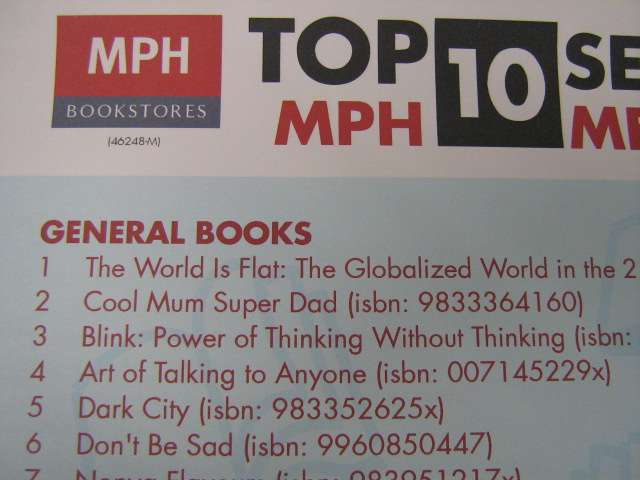Slumdogs
http://thestar.com.my/lifestyle/story.asp?file=/2009/3/1/lifefocus/3282059&sec=lifefocus
Real millionaires next?
By EUDORA LYNN
Well, Slumdog Millionaire has won the coveted Oscar for best picture. So will Indians who were up in arms against the negative portrayal of Mumbai relent a little if the next movie paints a rosier picture?
HOW would you like it?” demanded my Indian friend. “How would you like it if they portrayed Malaysia as a muddy backwater, full of slums and poverty? How would you like it if they portrayed Malaysians as poor, uneducated, and barbaric?”
Actually they have, I wanted to point out. Ben Stiller’s Zoolander depicts Malaysia as a Communist-style regime replete with red flag-waving masses and a Maoist prime minister in ankle-length robes; and in Entrapment, Catherine Zeta-Jones tells Sean Connery in a draughty voice as she stares at the Twin Towers, surrounded by kampung houses on stilts on the banks of a muddy, sampan-fringed river, “Isn’t it beautiful here?”
Children of the slum where Slumdog Millionaire actor Rubina Ali (who plays the youngest version of Latika) lives celebrate after the movie picked up eight awards at the recent Academy Awards.
There was a backlash then, I remember. Zoolander was banned from screening locally. Outraged Malaysians wrote letters to the newspapers on how Entraptment didn’t make sense as Sungai Melaka did not geographically connect to KLCC.
But none of the above can compare to the wrath of India following the release of best picture-winner Slumdog Millionaire, a rag-to-riches tale of an 18-year-old chaiwalla (tea server) who grew up in the Mumbai slums and enters the Indian version of Who Wants to be a Millionaire?.
A quick look through the Internet Movie Database, which has ‘‘free for all’’ message boards, reveals outrage: “It’s the worst piece of garbage I have ever seen!” exclaims one viewer. “I urge you – avoid this piece of sh*t at all costs!”. Another screams, “I pray to God this movie does not win the Best Picture Oscar. May Benjamin Button win instead.”
Well, Slumdog did win itself the biggie but does it deserve this vilification?
Painting the perfect picture?
Slumdog Millionaire is possibly the best Oscar contender in years: It’s a story that is uplifting in spirit, creative in execution and unflinching in its look at poverty in Mumbai.
The protagonist, Jamal Malik, grows up with his brother in the Juru slums of the city, amidst corrugated tin shed houses, mud and flies ... well, much like the slums anywhere else in Asia. Their mother is killed in a bloody demonstration against Muslims (which really took place in 1992-1993), leaving the kids to fend for themselves by stealing and sleeping under makeshift shelters.
Scores of people queue to see Mohammed Ismail, father of Slumdog’s child actor Azharuddin Ismail (who plays the youngest version of Jamal Malik), as he sits in his shanty in Mumbai. It is this image of the city’s poor that many Indians were unhappy showing the world.
Jamal and his brother are lured by gangs who prey on children, who then “train’’ them to be blind singers and prostitutes. The boys escape, together with a little girl they have befriended called Latika, and further continue their life of thievery by preying on tourists.
When Jamal enters Who Wants to be a Millionaire? and does exceptionally well, he is accused by the game show’s host of cheating (“How can an uneducated slumdog know anything?”) and is beaten and tortured by the police.
Naturally, many inferences are made:
1. Mumbai’s slums are really, really poor; 2. There is a real class divide in India, more pronounced, perhaps, than in other country. You are treated badly by many people if you are misfortunate enough to be of a lower class; 3. There is police brutality in India, involving crude electrocution torture; 4. The Indian underworld is rife with sinister gangs who have no compunctions about maiming and using children.
India, together with China, is now seen as the centre of economic growth, the heralded paradigm of the future to spearhead the world out of this global recession. Naturally, Indians are wary that Westerners would only be left with Slumdog’s vision of India – of horrific poverty, the kind that Westerners cannot comprehend, and of social practices thought to be eradicated 50 years ago.
India is trying hard to be seen as the new mecca of investment – a place where you can set up your company’s regional hub, where many workers speak English and will work for a pittance.
Indians are naturally proud of their towering new skyscrapers, their nuclear power plants, their burgeoning elite and middle class, their spawning millionaires. They want Western filmmakers to focus on this aspect of new India, not dwell on the negative.
I re-examined my friend’s question: “How would you like it if they portrayed Malaysians as poor, uneducated and barbaric?”
The truth is – I would not like it one bit. I would not like it if some Western filmmaker like Danny Boyle chose to focus on the racism and the political tension; the kampung-style slums that exist within Kuala Lumpur, peeking through the foliage of our greenery and skyscrapers. I cannot deny these things exist, but I still wouldn’t like to see it on film.
If a Western film is to be made about us – and there are so few, so every precious reel counts – I would want us to be portrayed as dynamic, up-and-coming, modern and vibrant. Yes, the negative does exist, but much like an interviewee keen on making the best of impressions on a potential hirer, I would like the world to get the best glimpse possible.
Arguments from Westerners abound on the Internet Movie Database. “You should be proud of the way India is portrayed in Slumdog,” says one. Well, that could be because, in the West, it is inferred that movies made on poverty-stricken, inter-marrying hillbillies or on crazed American serial killers offer a true look at all aspects of life – both the positive and negative. And Western audiences are mature enough to laud these movies.
Perhaps, it is suggested, we Asians lack the maturity to take a good look at ourselves?
I have come to the conclusion that perhaps, if we are given equal opportunity to show every aspect of ourselves in contemporary film – including the vigour, the robust city bustle, the towering skyscrapers and sprawling undercity tunnels, the rainforests, the kampungs, as well as the squalour, the corruption, the underbelly of society, the contempt with which we treat some of our foreign workers, the hunger for money and all its ugly implications – then yes, by all means, film us.
Write stories about us, but make them abundant and varied, and as plentiful as all the aspects of Western culture we get to see on TV and film and in books. Do not offer the world just a glimpse. Tell our story and make that many, many stories. The dark, the good, the ugly, the uplifting. And yes, by then we will be matured enough.


